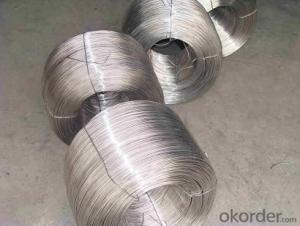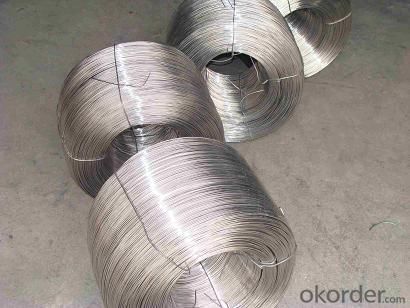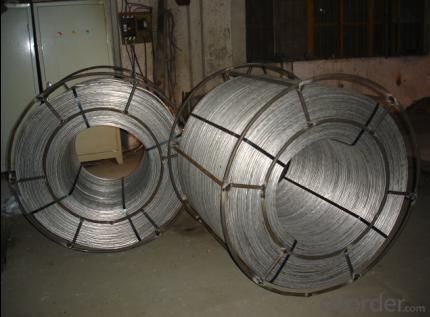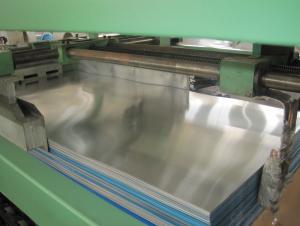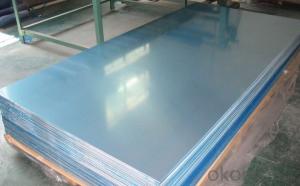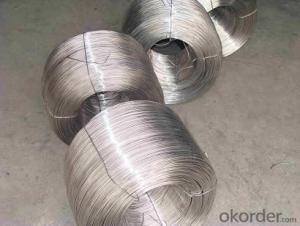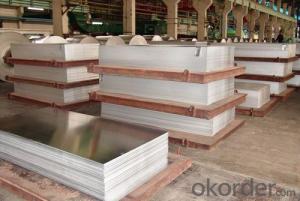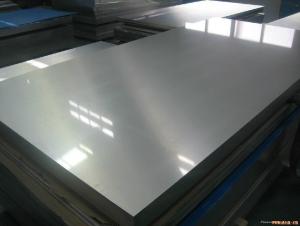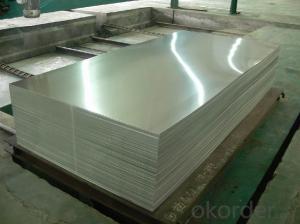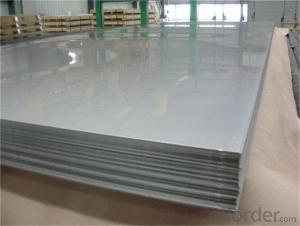Aluminum Sheets for Inkjet Printing - Aluminum Wire Series 1xxxx Manufactured in China
- Loading Port:
- Shanghai
- Payment Terms:
- TT OR LC
- Min Order Qty:
- 3 m.t.
- Supply Capability:
- 9000 m.t./month
OKorder Service Pledge
Quality Product, Order Online Tracking, Timely Delivery
OKorder Financial Service
Credit Rating, Credit Services, Credit Purchasing
You Might Also Like
Specification
Grade:
1000 Series,3000 Series,4000 Series,5000 Series,6000 Series,7000 Series,2000 Series
Surface Treatment:
Coated,Embossed,Anodized,Polished,Mill Finish,Color Coated,Oxidized,Enameled Wire,Brushed,Printed,Composited,Holographic Impression,Sand Blasted,Powder Coating
Shape:
Angle,Square,T-Profile,Round,Flat,Rectangular,Oval,Hexagonal
Temper:
T3-T8,O-H112,T351-T651,T351-T851,Soft,Half Hard,Hard
Application:
Liner & Wad,Decorations,Door & Window,Heat Sink,Transportation Tools,Glass Wall,Food,Kitchen Use,Pharmaceutical,Seal & Closure,Insulation Material,Label & Tag
Packaging & Delivery
| Packaging Details: | Wood pallet or as client's requirement |
| Delivery Detail: | Within 2 weeks or per customer request |
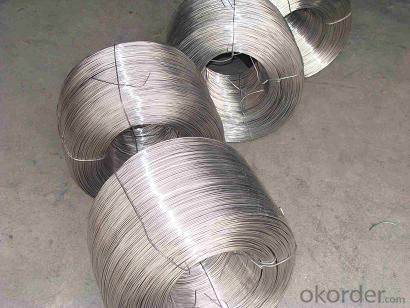
APPLICATION OF ALUMINUM WIRE ROD
Electrical Purposes, Electrical Conductors, Rods and Rivets
DIAMETER TOLERANCE OF 9.5 MM ALUMINUM WIRE ROD
| Specified Diameter in. (mm) | Deviation of Mean Diameter from Specified Diameter Tolerance, in. (mm) |
| 0.375-0.500 (9.52-12.70) | 0.020 (0.51) |
| 0.501-1.000 (12.73-25.40) | 0.025 (0.64) |

CHEMICAL COMPOSITION in % OF 9.5 MM ALUMINUM WIRE ROD
| Si | Fe | Cu | Mn | Cr | Zn | B | Ga | V+Ti | Others | Al(Min.) | |
| Each | Total | ||||||||||
| <0.10 | <0.4 | <0.05 | <0.01 | <0.01 | <0.05 | <0.05 | <0.03 | <0.02 | <0.03 | <0.10 | >99.50 |
TENSILE STRENGTH LIMITS OF 9.5 MM ALUMINUM WIRE ROD
| Temper | KSI | Mpa | Resistivity Ω.mm2/m, max | Conductivity %IACS, min |
| 1350-O | 8.5-14.0 | 59-97 | 0.027899 | 61.8 |
| 1350-H12 and -H22 | 12.0-17.0 | 83-117 | 0.028035 | 61.5 |
| 1350-H12 and -H22 | 15.0-20.0 | 103-138 | 0.028080 | 61.4 |
| 1350-H12 and -H22 | 17.0-22.0 | 117-152 | 0.028126 | 61.3 |
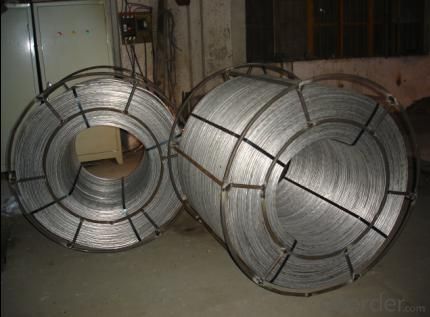
- Q: What is the bending radius for aluminum sheets?
- The bending radius for aluminum sheets can vary depending on the thickness and alloy of the sheet. Generally, for thinner sheets (around 1-3 mm), the recommended bending radius is approximately 1.5 times the sheet thickness. For thicker sheets (over 3 mm), the bending radius can be increased to around 2.5 times the sheet thickness. However, it is important to note that these are general guidelines and the specific bending radius may need to be adjusted based on the specific application and the desired outcome. It is always recommended to consult with a professional or refer to specific technical data sheets provided by the manufacturer for accurate bending radius information.
- Q: What are the different surface patterns available for aluminum sheets?
- Depending on the desired aesthetic and functional requirements, aluminum sheets can exhibit a range of surface patterns. Some commonly used patterns include: 1. Smooth Finish: This basic pattern offers a flat and polished appearance, ideal for applications that prioritize a clean and sleek look, such as architecture and interior design. 2. Stucco Embossed: Featuring a raised texture resembling stucco, this pattern enhances durability and slip resistance. It is suitable for surfaces like stair treads or ramps that require a non-slip surface. 3. Diamond Tread: This pattern consists of raised diamonds on the surface, providing superior traction and slip resistance. It is commonly used in applications where safety is a concern, such as vehicle running boards or industrial flooring. 4. Hammered Finish: Creating a textured appearance similar to hammered metal, this pattern adds visual interest and can be used to enhance the aesthetics of architectural elements, decorative panels, or furniture. 5. Brushed Finish: Also known as satin finish, this pattern is achieved by brushing the aluminum sheet in a linear direction. It creates a smooth and consistent texture, often used for decorative purposes in applications like signage, wall cladding, or kitchen appliances. 6. Perforated: In this pattern, the aluminum sheet is punctured with small holes or slots in a specific design or pattern. It allows for airflow, light transmission, and sound absorption, making it suitable for applications like ventilation systems, acoustic panels, or decorative screens. These examples illustrate the variety of surface patterns available for aluminum sheets. The choice of pattern depends on the intended use, desired appearance, and functional requirements of the application.
- Q: What are aluminum sheets made of?
- Pure aluminum or aluminum alloy is typically used to make aluminum sheets. Aluminum alloy is a mixture of aluminum and other elements like copper, magnesium, or zinc. The composition of the alloy varies depending on the intended use and desired properties of the sheet. Pure aluminum sheets are softer and easier to shape, while alloyed aluminum sheets provide greater strength, durability, and resistance to corrosion. To produce the sheets, a rolling process is employed, where a large block or ingot of aluminum is passed through rollers to decrease its thickness and form the desired size of the sheet.
- Q: Right now I have got some problems on how to machine high purity aluminium machinery,are thery any suggestions to promote for this kind of consecutive issue?
- Aluminum okorder is a soft, silvery-white metal. In high-purity aluminum nearly all impurities have been removed. It is 99.99 percent pure and is machined like other grades of aluminum. To process aluminum for various applications, the manufacturer heats the aluminum in a smelter and then forms it into ingots (large blocks) or billets (log-shaped rods). Using rolling mills, workers machine ingots into aluminum plates, sheets or foils. Dies machine ingots or billets into extrusions or forgings.
- Q: How do aluminum sheets compare to other metals?
- Aluminum sheets have several advantages compared to other metals. Firstly, they are lightweight, making them more manageable and cost-effective for transportation and installation. Secondly, aluminum has excellent corrosion resistance, allowing it to withstand harsh environments without deteriorating. Additionally, aluminum sheets are highly malleable, making them easy to shape and form into various designs. Lastly, aluminum exhibits good thermal and electrical conductivity, making it suitable for applications requiring heat dissipation or electrical conductivity. Overall, aluminum sheets offer a unique combination of properties that make them a versatile choice among other metals.
- Q: Can aluminum sheets be used for electronic enclosures?
- Yes, aluminum sheets can be used for electronic enclosures. Aluminum is a lightweight and durable material that offers excellent heat dissipation properties, making it suitable for protecting electronic components. Additionally, aluminum sheets can be easily fabricated to create custom enclosures that provide electromagnetic shielding and protection against environmental factors.
- Q: Can aluminum sheets be used for automotive body panels?
- Certainly, automotive body panels can indeed utilize aluminum sheets. In reality, the automotive industry is progressively incorporating aluminum due to its lightweight attributes and remarkable strength-to-weight ratio. By employing aluminum sheets for body panels, the overall weight of the vehicle is diminished, thereby enhancing fuel efficiency and performance. Moreover, aluminum exhibits exceptional resistance to corrosion, rendering it an enduring selection for automotive purposes. The use of aluminum sheets for automotive body panels has gained considerable popularity, particularly in the manufacturing of electric vehicles, as their lightweight structure optimizes the vehicle's range.
- Q: Is it possible to substitute aluminum sheets for wood siding in construction?
- <p>Yes, you can use aluminum sheets to replace wood siding. Aluminum siding is a popular alternative to wood for several reasons. It is lightweight, durable, and resistant to rot, insects, and moisture. It also requires less maintenance than wood and can be painted to match various aesthetic preferences. However, it's important to consider factors such as insulation properties, cost, and the look you want to achieve, as aluminum may not perfectly mimic the appearance of wood. Always consult with a professional to ensure proper installation and compatibility with your home's architecture.</p>
- Q: Can aluminum sheets be used for soundproofing?
- Indeed, soundproofing can be achieved using aluminum sheets. With its high density, aluminum serves as a formidable obstacle to the transmission of sound. By combining aluminum sheets with sound-absorbing materials like foam or fiberglass, the propagation of sound waves can be decreased, thereby mitigating noise pollution. Moreover, the versatility of aluminum sheets allows for effortless installation on walls, ceilings, and various surfaces, making it an ideal choice for soundproofing purposes.
- Q: Can aluminum sheets be used for electronic devices?
- Indeed, electronic devices can utilize aluminum sheets. The electronics industry extensively employs aluminum owing to its commendable conductivity, lightweight structure, and remarkable resilience. It is frequently employed in diverse capacities, including enclosures for electronic elements, heat dissipation systems, and electrical connectors. Aluminum sheets can be effortlessly shaped into various dimensions and configurations, rendering them adaptable for a broad array of electronic devices. Moreover, aluminum emerges as a cost-efficient material, fostering its allure to electronics manufacturers.
Send your message to us
Aluminum Sheets for Inkjet Printing - Aluminum Wire Series 1xxxx Manufactured in China
- Loading Port:
- Shanghai
- Payment Terms:
- TT OR LC
- Min Order Qty:
- 3 m.t.
- Supply Capability:
- 9000 m.t./month
OKorder Service Pledge
Quality Product, Order Online Tracking, Timely Delivery
OKorder Financial Service
Credit Rating, Credit Services, Credit Purchasing
Similar products
Hot products
Hot Searches
Related keywords
